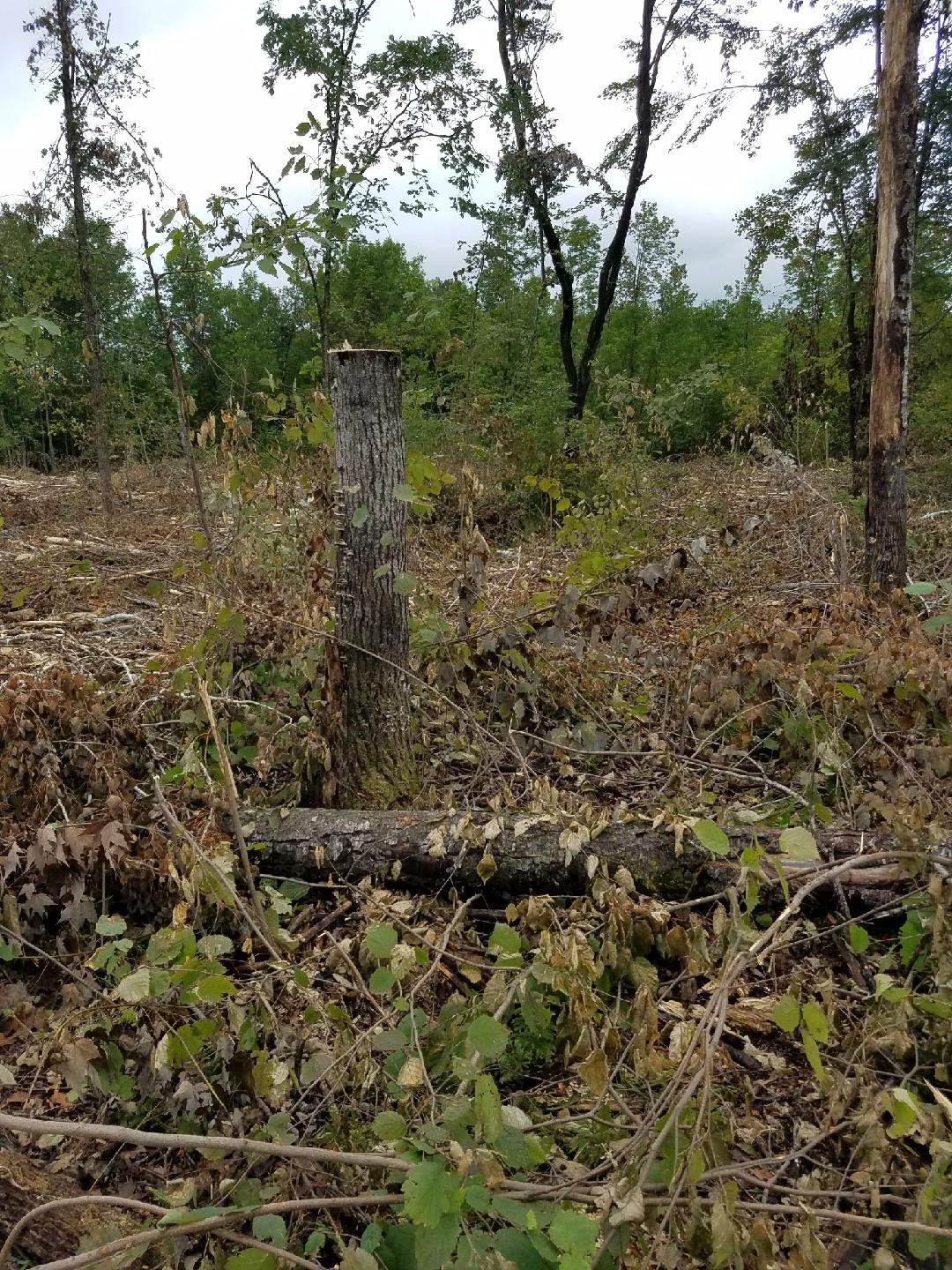Overview
This is the first entry into 190 acres (Sec.29&32) of 43-year-old aspen types in the Alder Pond Ruffed Grouse Management Area. These stands are divided into 4 management areas; with one being the 59.4 acres in this case study. This management section will be put up for auction in Spring of 2018 with loggers having between 3 and 4 years to harvest the area according to the prescription. Harvests will be separated by a 7-9 year gap to create an uneven-aged stand that would provide a better habitat for ruffed grouse. Adjacent areas have been logged before (see Figure 1 & 2), but not this exact stand. A windstorm nearby (in 2012) blew down an area of 30-year-old aspen, which was cleaned up and managed for timber and ruffed grouse habitat.
Silviculture Objective(s)
The objectives of this stand are to manage a ruffed grouse habitat by creating different age classes of aspen while promoting species diversity within the stands through a clearcut with reserves for aspen and a shelterwood with reserves for ash species.
Pre-treatment stand description and condition
Pre-treatment species composition:
Northern hardwoods: aspen, ash, pine, bur oak, balsam, cedar, and yellow birch.
Pre-treatment forest health issues:
Phellinus tremulae is present in the aspen. Emerald ash borer is not a major issue, but enhancing a variety of species would ameliorate its possible effects.
Silviculture Prescription
-Regeneration harvest: For the harvest, a clearcut with reserves is proposed for aspen. Reserve species include pine, bur oak and balsam fir. The logger should maintain or create one drumming log per acre to enhance ruffed grouse habitat, by cutting a 10-14” dbh aspen 6 feet high (preferably a snag), with the top then placed next to the 6 foot high stump. In addition to this, a shelterwood with reserves will be used for ash species, leaving cedar, balsam fir, and yellow birch as reserves (with 50 square feet of basal area in total). The shelterwood will be done in the southwest corner of the property.

Figure 1: Photograph of drumming log habitat created for ruffed grouse after a timber sale in an adjacent area, summer 2017. Source: Robert Rother
The estimated volume to be removed during the harvest can be found in Table 1.
Table 1: Appraisal of merchantable timber in the managed area. Source: Adapted from: RA-FM/COC-1709 Timber report - Appraisal of Itasca County Timber.
| Species | Volume | Unit | Appraised Price ($) | Value ($) |
| Aspen | 1100 | cords | 23 | 25300 |
| Maple | 80 | cords | 9 | 720 |
| Ash | 60 | cords | 18 | 1080 |
| Birch | 45 | cords | 14 | 630 |
| Balsam | 40 | cords | 17 | 680 |
| Balm | 20 | cords | 20 | 400 |
| Basswood | 12 | cords | 9 | 108 |
| Red oak | 8 | cords | 27 | 216 |
| Tamarack | 5 | cords | 6 | 30 |
| Black spruce | 2 | cords | 20 | 40 |
| White spruce | 2 | cords | 20 | 40 |
| Total | 1374 | - | 183 | 29244 |
*Product: woodsrun. All species except aspen are non-bid species.
Slash (tops and limbs) produced during the harvest will remain evenly scattered along the stands, unless biomass itself is harvested.
The harvest will be done during winter (on frozen ground) between December and March, which will minimize the impact on the ground and water resources. Furthermore, ski trails would be used as a road network to transport the wood out of the forest.
-Regeneration: The system will rely on natural regeneration through seeding and suckering from aspen, ash and northern hardwood species.
What actually happened during the treatment
The harvest went as planned. Drumming logs with guard trees were created for grouse habitat as planned.
Post-treatment assessment
The 4 aspen clearcut blocks - including the 59.4 acre block in this case study - have regenerated and surveys came up with 15,000-18,500 stems/acre.
Plans for future treatments
Future treatments would include adding a conifer component to the stand such as balsam fir or black spruce through artificial regeneration, to provide a thermo-cover for ruffed grouse and other wildlife.
About 50 acres of aspen in this area is scheduled to be harvested in about 2026.
Other notes
Supplemental content can be found using these links: Timber Auction GIS map and downloadable GIS shapefiles (UTM) available at the right side of the page.
This case study was developed with support from the United States Department of Agriculture's National Institute for Food and Agriculture (USDA-NIFA), Renewable Resources Extension Act (RREA). Project #MIN-44-E03, principal investigator Eli Sagor, University of Minnesota.
